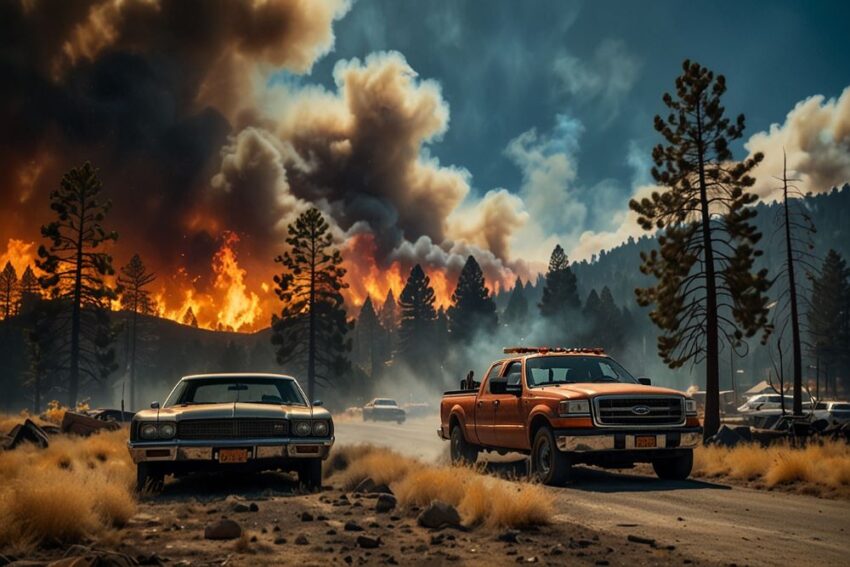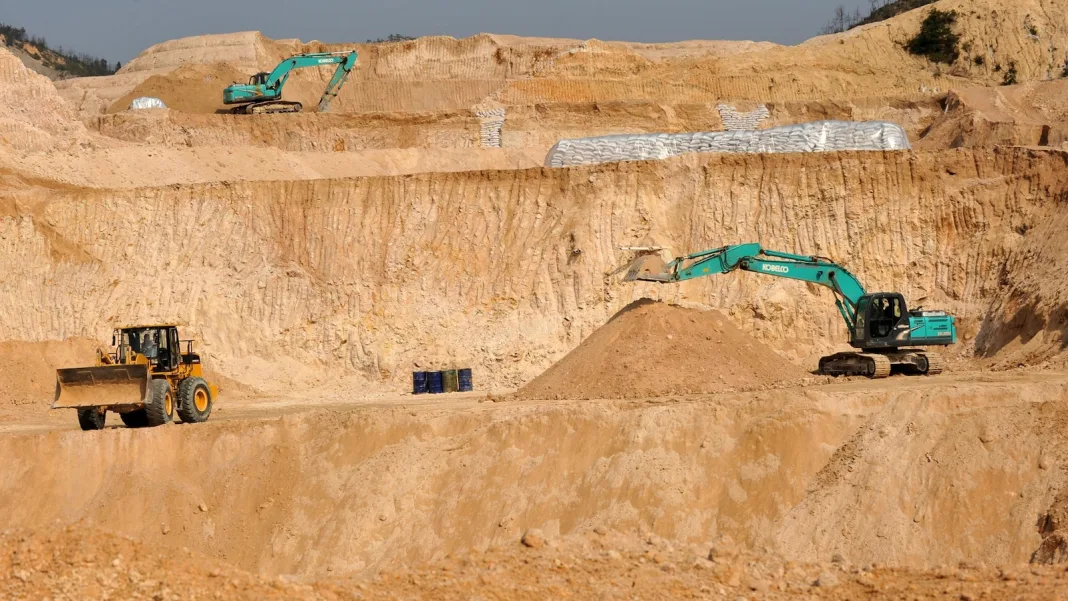Published on
August 25, 2025

Wildfires are raging across Northern California and Central Oregon, prompting evacuations as communities face severe threats. The Pickett Fire in Napa Valley and the Flat Fire near Sisters have already scorched thousands of acres, forcing residents to flee. These fires are fueled by dry conditions and intense heat, making them particularly difficult to contain. Travel alerts have been issued in both areas, urging people to stay informed and adjust plans accordingly. Thousands of homes are at risk, and evacuations have been ordered in affected zones. As these wildfires continue to grow, firefighters are working tirelessly, despite challenging weather and terrain. The situation remains critical, and authorities are closely monitoring the fires’ progression. Travelers heading to these regions should keep up with the latest updates and avoid affected areas to ensure safety. This is an ongoing crisis, and the threat of wildfires is far from over.
In California, the Pickett Fire in Napa County has been one of the most devastating. The fire, which broke out on August 21, 2025, has already charred approximately 6,803 acres of land. As of August 24, the fire was only 11% contained, with dangerous conditions continuing to threaten nearby communities. Local authorities issued evacuation orders for around 190 people, while another 360 residents were placed under evacuation warnings.
The fire has already burned through dry grass, brush, and trees, threatening 500 structures, and crews are working non-stop to prevent further destruction. The fire has grown rapidly in the past few days, and despite efforts to contain it, the terrain remains difficult, with steep slopes making it harder for crews to gain full control of the fire. While the weather in the region moderated slightly on Sunday, with temperatures reaching 94°F (34°C), the lower humidity levels, coupled with strong winds, continue to fuel the fire’s spread.
Firefighting Efforts Under Extreme Conditions
More than 1,200 firefighters, backed by helicopters and bulldozers, are currently battling the flames. The fire started in a remote area of Napa County, where the steep slopes and thick vegetation made suppression efforts particularly challenging. Aerial resources, including helicopters, have been vital in dropping water and retardant to slow the fire’s progress.
Firefighters have managed to establish some containment lines, but they face significant challenges due to the dry conditions and difficult terrain. The situation is being compounded by winds that are shifting directions, making it harder to control the fire and keep it within designated boundaries. While fire officials remain hopeful that containment efforts will gain momentum, the unpredictability of the weather continues to hinder progress.
Wildfire Danger Spreads Across Oregon
To the north, in central Oregon, the Flat Fire is also causing significant damage. The fire broke out on August 21, 2025, near the towns of Sisters and Jefferson County, and by August 24, it had consumed nearly 34 square miles (88 square kilometers) of land. Firefighters have not yet managed to contain the blaze, and over 4,000 homes are under evacuation notices.
The Flat Fire‘s rapid growth has been fueled by dry grasses and juniper trees in the region’s high desert climate. While firefighters have been able to establish some containment lines, the steep and rugged terrain remains a major obstacle. Over 1,230 firefighters, assisted by air support and ground crews, continue to battle the fire’s progression.
The fire’s unpredictable nature has caused additional concern as isolated thunderstorms have been forecasted, threatening to spark new fires and push the flames in unexpected directions. Local authorities have warned that the fire could potentially jump containment lines if the weather worsens. The storm’s downdrafts are expected to push the fire in multiple directions, adding even more uncertainty to the firefighting efforts.
Gifford Fire: Progress Amidst Challenges
In Central California, the Gifford Fire, which broke out on August 1, 2025, has now become the state’s largest blaze of the year. The fire has burned more than 130,000 acres of land across San Luis Obispo and Santa Barbara counties. As of August 24, firefighters have managed to contain about 95% of the fire. However, it has already destroyed five structures and caused damage to others, with dozens of people injured.
More than 5,000 personnel have been deployed to manage the fire, with their efforts focused on extinguishing hotspots and reinforcing containment lines. The favorable weather conditions in the past few days have allowed for significant progress in containing the blaze, but the work is far from over. Firefighters are continuing to monitor the situation closely as isolated hotspots remain active.
Air Quality and Health Risks
The impact of these fires extends beyond the immediate danger of the flames. In Napa, Sonoma, and Solano counties, the smoke from the Pickett Fire has created hazardous air quality conditions, leading to health warnings for residents. The air quality in many areas has reached levels that can cause significant respiratory issues, especially for children, the elderly, and those with pre-existing respiratory conditions. Similar concerns have been raised in Oregon, where the Flat Fire has contributed to air pollution and visibility issues.
Residents are advised to remain indoors and avoid strenuous outdoor activities until the air quality improves. Authorities are monitoring the air quality levels and providing updates to help people take appropriate precautions.
Climate Change and the Increasing Wildfire Threat
Scientists have long warned that the increasing frequency and intensity of wildfires are linked to climate change. The rising global temperatures, fueled by human-caused emissions from burning fossil fuels, have contributed to longer and more intense wildfire seasons. These fires are becoming more difficult to predict and control, with extreme heatwaves, drought conditions, and dry vegetation setting the stage for the destructive wildfires we are now witnessing in California and Oregon.
While it is challenging to attribute any single fire directly to climate change, the growing intensity of the wildfires is undeniable. As temperatures continue to rise, fire seasons are expected to become longer and more destructive, affecting communities across the West and beyond.
How to Travel Safe During Wildfire Season
For those living in areas at risk of wildfires, it’s essential to stay informed and be prepared. Here are some key tips to travel safe:
- Stay Updated: Follow local authorities, fire departments, and news sources for the latest evacuation orders, road closures, and air quality updates.
- Prepare Emergency Kits: Have essentials like water, food, medications, flashlights, and important documents packed in an easily accessible location in case you need to evacuate quickly.
- Follow Evacuation Orders: If you’re told to evacuate, do so immediately and follow the instructions provided by authorities.
- Stay Indoors: If you’re in an area with hazardous air quality, limit outdoor activities, and keep windows and doors closed to prevent smoke from entering your home.
- Help Others: Check in on neighbors, especially elderly or vulnerable individuals, to ensure they’re safe and have a plan in place.
Conclusion: A Call for Action and Awareness
The ongoing wildfires in California and Oregon are a stark reminder of the increasing threat posed by climate change and the devastating consequences of extreme heat and drought. As residents in affected areas battle the fires and evacuate their homes, the dedication of firefighters and emergency personnel is commendable. However, the need for increased awareness and preparedness is more urgent than ever.
For travelers planning to travel to California or Oregon, it is crucial to stay updated on evacuation orders and air quality advisories. Monitoring local authorities and making travel adjustments as necessary can help ensure safety.
As the fires continue to burn, it is clear that the increasing intensity of these events requires a collective effort to address climate change and prepare for the future.
Source: AP News






